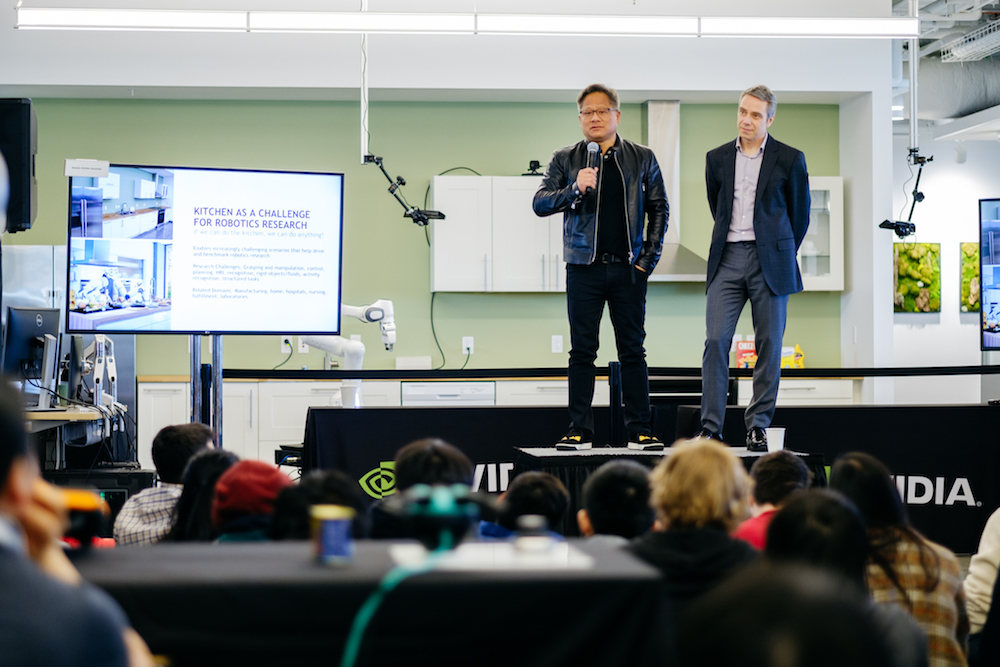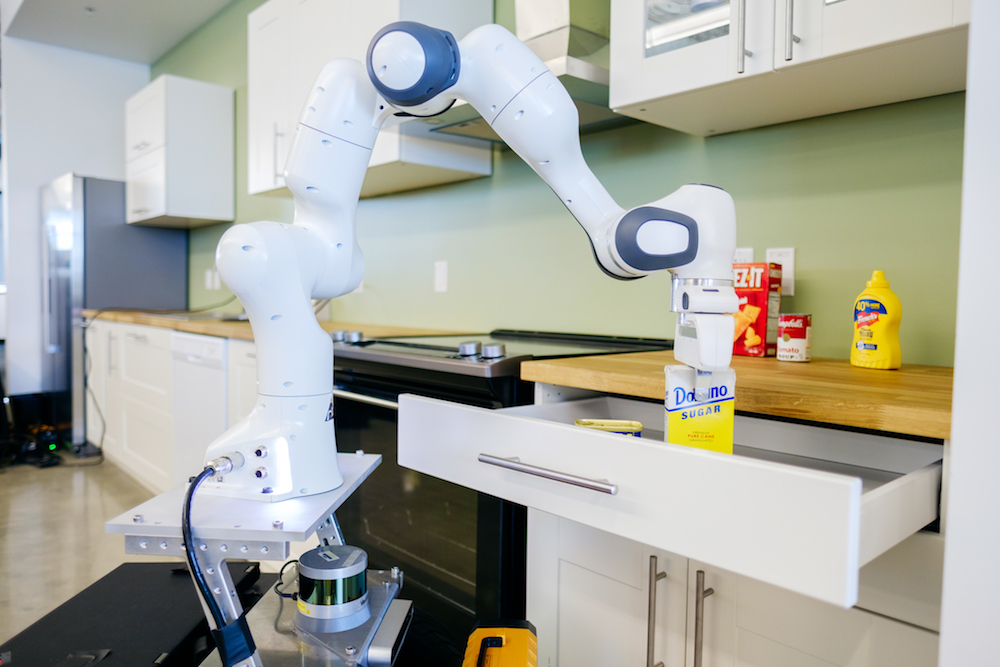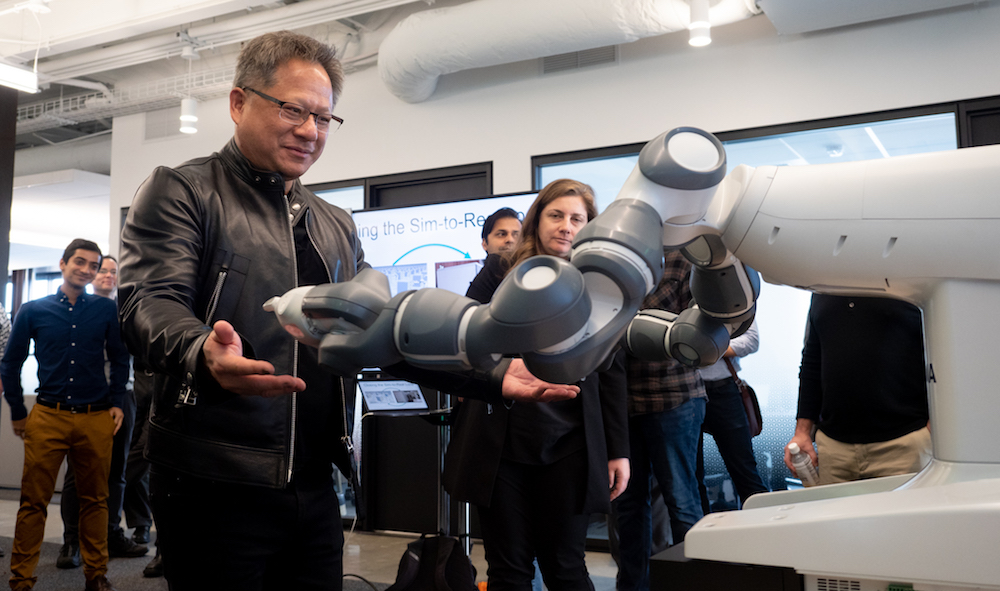2018年中国机器人十大科技技术发布
深圳选出这十大年度机器人企业,七家专注AI领域
How Monteris Medical navigated a surgical robotics recall

Monteris Medical NeuroBlate robot-assisted brain surgery system.
Editor’s Note: This article was originally published by our sister website Medical Design & Outsourcing.
Marty Emerson became CEO of Monteris Medical in July 2016. Within a month, the first report came in of a problem: The probe tip of the Plymouth, Minn.-based company’s NeuroBlate robot-assisted brain surgery device unintentionally heated up during the MRI-assisted procedure.
That discovery would eventually turn into a recall designated as Class I by U.S. Food and Drug Administration (FDA) – Emerson’s first in his roughly 30 years in medtech. Understanding and solving the problem would consume Emerson and dozens of Monteris employees over the next two years.
“Almost every emerging technology at some point or another in its maturation process has to go through one of those trials by fire, if you will, where you’re really getting into the core of your science and technology,” Emerson said.
Some regulatory experts said that although the company’s response to the problem wasn’t perfect, it appears to be out of the woods. In October 2018, Monteris won FDA clearance for a laser probe with fiberoptic-controlled cooling for NeuroBlate. The fiberoptic part replaced a metal thermocouple inside the laser probe, enabling Monteris to lift MR scan restrictions. All patient-contacting components are now non-metallic.
In late 2018, Monteris also announced that more than 2,000 patients have been treated with NeuroBlate since its release in 2013; the company also won reimbursement from Aetna and Anthem. Emerson is optimistic that the roughly $10 million a year company – which had seen annual revenue growth of 40% before 2018 – is set to grow again as it turns its focus to sales and marketing.
NeuroBlate uses a robot-guided laser to ablate brain tissue during MRI scans. Some brain surgeons find NeuroBlate a useful surgical option for certain epilepsy and brain cancer patients who don’t have many other alternatives, according to Emerson.
Monteris ticked off a lot of boxes for Emerson after he left the top spot at Galil Medical, the Arden Hills, Minn.–based interventional oncology cryoablation technology company he led until its 2016 acquisition by London-based BTG for up to $110 million.
A stint as a general manager for Boston Scientific in Singapore in the late 1990s, after joining Baxter in a finance role right out of college in 1985, was Emerson’s first foray into a management career that eventually led to the corner office at Minnetonka, Minn.-based American Medical Systems. (AMS’s male urology portfolio is now part of Boston Sci, and its women’s health portfolio is now Astora Women’s Health.)
Although his sales background and communication skills were what initially landed him at AMS, then-CEO Doug Kohrs told us, Emerson’s level-headed and numbers-oriented approach soon became apparent. Kohrs said he considered those unusual traits for a salesperson and eventually promoted Emerson to COO and groomed him for the top job.
“Marty took a very pragmatic approach to solving problems,” Kohrs recalled. “He wasn’t a sky-is-falling kind of guy. He just saw what was going on, and then he got the resources that he needed, and he fixed it.”
Frank Jaskulke, VP of intelligence at Minnesota’s Medical Alley Assn., described Emerson as among the most respected leaders in the state because of his work growing AMS, Galil and now Monteris.
He would need all of his skills after learning of the first unintended probe heating incident in August 2016.
“It became the No. 1 priority,” Emerson said. “We viewed this as an incredibly important initiative that had, at its core, a need to be intensely focused on the science and technology that supports our company.”
Company officials quickly determined the problem involved a coated metal thermocouple that helped measure temperature inside the probe. As Emerson explained it, the connector from the back of the probe to the system had sometimes moved too close to the bore of the MRI magnet, picking up energy that was transmitted down the probe and heating the tip.
The problem only occurred inside particular MRI systems running specific scan types, leading the Monteris team to test more than 20 permutations and combinations from companies including Philips, Siemens and GE.
In December 2016, as the company’s investigation progressed, another probe tip-heating case surfaced; two more incidents occurred shortly before Monteris alerted the FDA in September 2017. In one, a patient died of a brain bleed a few days after the procedure, although it wasn’t conclusive that the probe tip heating was responsible, according to the FDA.
Emerson said that Monteris came to FDA with a thorough understanding of the problem, data from testing the 20 MR equipment permutations, updated instructions for use designed to mitigate the issue and a product development plan to permanently resolve the problem.
Communication and transparency among the Monteris team, with the FDA and with physicians were front-of-mind for Emerson during this process, he told us, recalling a number of late nights when executives and regulatory experts jointly edited responses to the FDA. An accountant by training, he also tried to stay mindful of what he didn’t know.
“I’m not an FDA expert,” he explained. “I relied heavily on the scientists and the technologists and the engineers and the experts on my team to get us through this process.”
Did Monteris do enough?
Although Monteris appears to have done many things right and appears to have succeeded in eliminating the problem, according to regulatory experts, there are lessons to be learned for companies facing similar problems. Former FDA analyst Madris Tomes, now CEO of medtech safety software company Device Events, said she was especially impressed that out of the 342 adverse event reports she counted for the company since 2010, about half came from Monteris’ salespeople – a much better record than the industry as a whole.
“I’ve seen a lot of things handled much worse than this,” Tomes added.
Michael Drues, a Southern California-based regulatory consultant, questioned why more than a year elapsed between Monteris learning of the problem and alerting the FDA.
“Unfortunately, there is no regulation that requires this for a 510(k) yet – there is for PMAs – but a company does have an obligation, in my opinion, to let FDA know what is going on ASAP. This was a Class I recall, which has potential for serious injury and death.”
“There was never any suggestion from FDA that we didn’t move fast enough,” Emerson told us when asked about the time gap. “We were doing an immense amount of testing along the way.”
There were only two instances of probe tip overheating over the course of 12 months, he added. After Monteris issued updated instructions for use in early October 2017, the company received no reports of unintended heating for the year preceding FDA approval of its new technology, Emerson said.
As of press time, representatives for the FDA had not responded to a request for comment on the Monteris recall.
Monteris emphasizes thorough and complete adverse event reporting, Emerson said, adding that he strives to remember that the company puts its tools in physicians’ hands to help patients.
“The vast majority of the patients … are really well served by the technology that we’ve provided to those physicians,” Emerson said. “I can’t let an unfortunate outcome stop us.”
The post How Monteris Medical navigated a surgical robotics recall appeared first on The Robot Report.
国内哪些高校一直在发展尖端专业?这份专业填报指南快收好!
Inside NVIDIA’s new robotics research lab

NVIDIA CEO Jensen Huang (left) and Senior Director of Robotics Research Dieter Fox at NVIDIA’s robotics lab.
The Robot Report named NVIDIA a must-watch robotics company in 2019 due to its new Jetson AGX Xavier Module that it hopes will become the go-to brain for next-generation robots. Now there’s even more reason to keep an eye on NVIDIA’s robotics moves: the Santa Clara, Calif.-based chipmaker just opened its first full-blown robotics research lab.
Located in Seattle just a short walk from the University of Washington, NVIDIA’s robotics lab is tasked with driving breakthrough research to enable next-generation collaborative robots that operate robustly and safely among people. NVIDIA’s robotics lab is led by Dieter Fox, senior director of robotics research at NVIDIA and professor in the UW Paul G. Allen School of Computer Science and Engineering.
“All of this is working toward enabling the next generation of smart manipulators that can also operate in open-ended environments where not everything is designed specifically for them,” said Fox. “By pulling together recent advances in perception, control, learning and simulation, we can help the research community solve some of the greatest challenges in robotics.”
The 13,000-square-foot lab will be home to 50 roboticists, consisting of 20 NVIDIA researchers plus visiting faculty and interns from around the world. NVIDIA wants robots to be able to naturally perform tasks alongside people in real-world, unstructured environments. To do that, the robots need to be able to understand what a person wants to do and figure out how to help achieve a goal.
The idea for NVIDIA’s robotics lab came in the summer of 2017 in Hawaii. Fox and NVIDIA CEO Jensen Huang met at CVPR, an annual computer vision conference, and discussed the exciting areas and difficult problems ongoing in robotics.
“NVIDIA dedicates itself to solving the very difficult challenges that computing can solve. And robotics is unquestionably one of the final frontiers of artificial intelligence. It requires the convergence of so many types of technologies,” Huang told The Robot Report. “We wanted to dedicate ourselves to make a contribution to the field of robotics. Along the way it’s going to spin off all kinds of great computer science and AI knowledge. We really hope the technology that will be created will allow industries from healthcare to manufacturing to transportation and logistics to make a great advance.”
NVIDIA said there are about a dozen projects currently underway, and NVIDIA will open source its research papers. Fox said NVIDIA is primarily interested, early on at least, in sharing its software developments with the robotics community. “Some of the core techniques you see in the kitchen demo will be wrapped up into really robust components,” Fox said.
We attended the official opening of NVIDIA’s robotics research lab. Here’s a peek inside.
Mobile manipulator in the kitchen

NVIDIA’s mobile manipulator includes a Franka Emika Panda cobot on a Segway RMP 210 UGV. (Credit: NVIDIA)
The main test area inside NVIDIA’s robotics lab is a kitchen the company purchased from IKEA. A mobile manipulator, consisting of a Franka Emika Panda cobot arm on a Segway RMP 210 UGV, will try its hand at increasingly difficult tasks, ranging from from retrieving objects from cabinets to learning how to clean the dining table to helping a person cook a meal.
During the open house, the mobile manipulator consistently fetched objects and put them in a drawer, opening and closing the drawer with its gripper. Fox admitted this first task is somewhat easy. The robot uses deep learning to detect specific objects solely based on its own simulation and doesn’t require any manual data labeling. The robot uses the NVIDIA Jetson platform for navigation and performs real-time inference for processing and manipulation on NVIDIA TITAN GPUs. The deep learning-based perception system was trained using the cuDNN-accelerated PyTorch deep learning framework.
Fox also made it clear why NVIDIA chose to test a mobile manipulator in a kitchen. “The idea to choose the kitchen was not because we think the kitchen is going to be the killer app in the home,” said Fox. “It was really just a stand in for these other domains.” A kitchen is a structured environment, but Fox said it is easy to introduce new variables to the robot in the form of more complex tasks, such as dealing with unknown objects or assisting a person who is cooking a meal.”
Deep Object Pose Estimation

NVIDIA Deep Object Pose Estimation (DOPE) system. (Credit: NVIDIA)
NVIDIA introduced its Deep Object Pose Estimation (DOPE) system in October 2018 and it was on display in Seattle. With NVIDIA’s algorithm and a single image, a robot can infer the 3D pose of an object for the purpose of grasping and manipulation. DOPE was trained solely on synthetic data.
One of the key challenges of synthetic data is the ability to bridge the reality gap so that networks trained on synthetic data operate correctly with real-world data. NVIDIA said its one-shot deep neural network, albeit on a limited basis, has accomplished that. The system approaches its grasps in two steps. First, the deep neural network estimates belief maps of 2D keypoints of all the objects in the image coordinate system. Next, peaks from these belief maps are fed to a standard perspective-n-point (PnP) algorithm to estimate the 6-DoF pose of each object instance.
Read our interview about the DOPE system with Stan Birchfield, a Principal Research Scientist at NVIDIA, here.
Tactile sensing
NVIDIA had two demos showcasing tactile sensing, which is a missing element for commercialized robotic grippers. One demo featured a ReFlex TakkTile 2 gripper from RightHand Robotics, which recently raised $23 million for its piece-picking technology. The ReFlex TakkTile 2 is a ROS-compatible robotic gripper with three fingers. The gripper has three bending DOF and 1 coupled rotational DOFs. Sensing capabilities include normal pressure sensors, rotational proximal joint encoders, and fingertip IMUs.
The other demo, run by NVIDIA senior robotics researcher Karl Van Wyk, featured SynTouch tactile sensors retrofitted onto an Allegro robotic hand from South Korea-based Wonik Robotics and a KUKA LBR iiwa cobot. “It almost feels like a pet!” said Huang as he gently touched the robotic fingers, causing them to pull back. “It’s surprisingly therapeutic. Can I have one?”
Van Wyk said tactile sensors are starting to trickle out of research labs and into the real world. “There is a lot of hardening and integration that needs to happen to get them to hold up in the real world, but we’re making a lot of progress there. The world we live in is designed for us, not robots.”
The KUKA LBR iiwa wasn’t using any vision to sense its environment. “The robot can’t see that we’re around it, but we want it be constantly sensing and reacting to its environment. The arm has torque sensing in all of the joints, so it can feel that I’m pushing on it and react to that. It doesn’t need to see me to react to me.
“We have a 16-motor hand over with three primary fingers and an opposable thumb, so it’s like our hands. The reason you want a more complicated gripper like this is you want to eventually be able to manipulate objects in your hands like we do on an daily basis. It is very useful and makes solving physical tasks more efficient. The SynTouch sensors measure what’s going on when we’re touching and manipulating something. Keying off those sensors is important for control. If we can feel the object, we can re-adjust the grip and the finger location.”
Human-robot interaction

Huang tests a control system that enables a robots to mimic human movements. (Credit: NVIDIA)
Another interesting demo was NVIDIA’s “Proprioception Robot,” which is the work of Dr. Madeline Gannon, a multidisciplinary designer nicknamed the “Robot Whisperer” who is inventing better ways to communicate with robots. Using a two-armed ABB YuMi and a Microsoft Kinect on the floor underneath the robot, the system would mimic the movements of the human in front of it.
“With YuMi, you don’t need a roboticist to program a robot. Using NVIDIA’s motion generated algorithms, we can have engaging experiences with lifelike robots.”
You might have heard of Gannon’s recent work at the World Economic Forum in September 2018. She installed 10 industrial robot arms in a row, linking them to a single through a central controller. Using depth sensors at the bases of the robots, they tracked and responded to the movements of people passing by.
“There are so many interesting things that we could spin off in our pursuit of a general AI robot,” said Huang. “For example, it’s very likely that in the near future you’ll have ‘exo-vehicles’ around you, whether it’s an exoskeleton or an exo-something that helps people who are disabled, or helps us be stronger than we are.”
The post Inside NVIDIA’s new robotics research lab appeared first on The Robot Report.